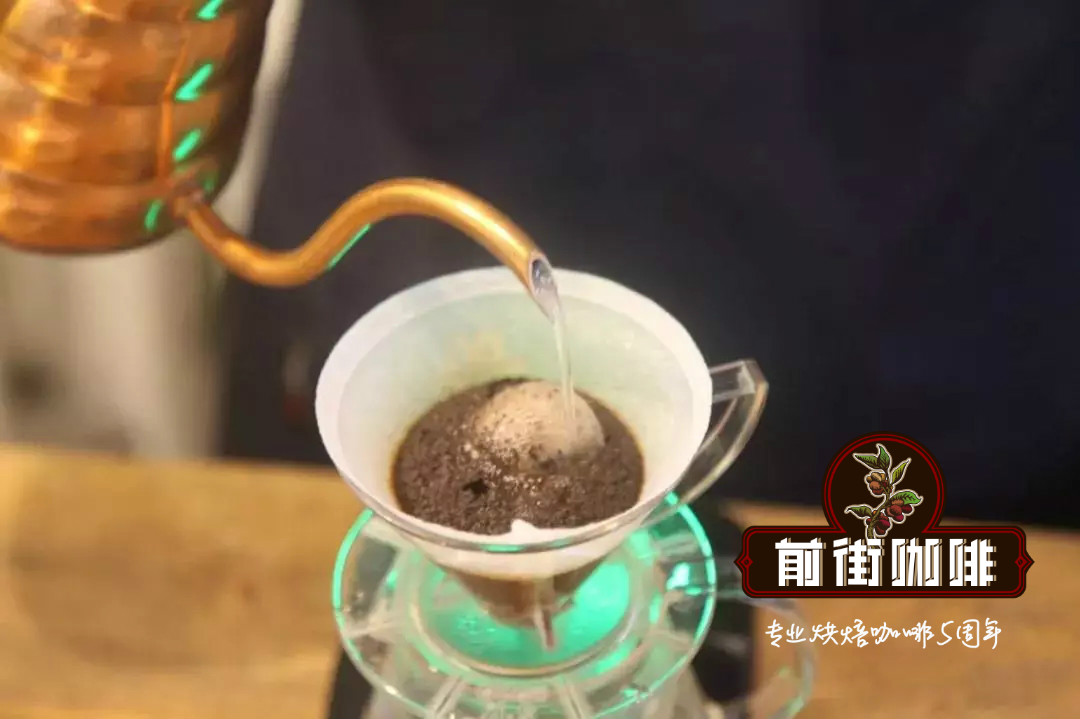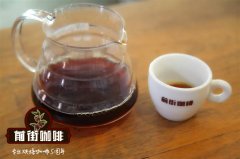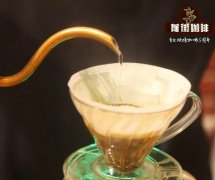The winner of American boutique coffee cups-- the correct use of bourbon coffee

Professional coffee knowledge exchange more coffee bean information please follow the coffee workshop (Wechat official account cafe_style)
Bourbon is a branch of Typica, a variety of Arabica coffee beans. It is native to Bourbon Island in the Indian Ocean (now known as Reunion Island). It is mainly planted in Central and South America, including El Salvador, Brazil (Barzil), Rwanda, Panama (Banama). Wait for the place. The early Bourbon was a variant of Ethiopian Typica after it was transplanted to Yemen. France began to transplant Yemeni mocha round beans to Bourbon Island on the east coast of Africa (renamed Reunion Island after the French Revolution) in 1715. Bourbon beans also spread to Brazil and Central and South America in 1727, and it was also Bourbon beans that Britain transplanted Yemeni mocha to St. Helena Island in 1732. The biggest difference between its appearance and the iron pickup is that the leaves are wider, the fruiting coffee fruit is smaller, and the production is more intensive, so the appearance difference of the coffee fruit compared with the iron pickup is that the fruit body is smaller and more round.
Bourbon is the winner of the American boutique coffee cup test. Since 2011, Taiwan has also successfully cultivated Huang bourbon, mainly in Taichung News Society, Dongshi, Alishan, Dongshan, Pingtung and Taitung. At present, the number of plants has not yet reached the economic scale, and the quantity is rare.
Generally ripe coffee beans show a red color, but mature coffee grown in bourbon shows a yellow color, so it is generally called Yellow Bourbon. In Brazil, which is the largest exporter of coffee beans in the world, Huangbourne accounts for less than 1%, which is very precious and rare.
The cultivation of yellow bourbon coffee beans is more difficult and the yield is lower. Roasted coffee beans are dry and sweet with nutty and cocoa / chocolate aromas. Yellow bourbon beans usually use half-sun (or half-water washing), and some bourbon varieties have fruit aromas, especially the aroma and sweetness of cooking.
Coffee beans are basically divided into Arabica and Robasta beans. And there are 2, 000 to 3, 000 varieties of Arabica beans, all of which are derived from Tibica Typica of Ethiopia and bourbon Bourbon of Yemen after being transplanted into Central and South America or Asia.
When it comes to bourbon varieties, we will think of the well-known yellow bourbon coffee beans, as the name implies, the yellow bourbon coffee fruit does not turn red when ripe, but into an orange rind, which is a unique bourbon variety of S ã o Paulo in Sao Paulo, Brazil. Yellow bourbon beans are suitable for both light roasting and deep roasting. In recent years, they have received a lot of attention because they won the top three awards in CoE (Cup of Excellence) in Brazil, and have become the formula beans for many espresso.
In other words, bourbon and Tibika are juxtaposed as ancient and high-quality coffee varieties, and some botanists even believe that bourbon is a variety of early Tibica species transplanted to Yemen, and the beans are round in shape. So how did the name bourbon come from? For a long time, bourbon species have been mistaken for the island of bourbon on the east coast of Africa, but in fact many round bourbon beans spread directly from Yemen without passing through the island of bourbon. At present, bourbon beans in Central and South America belong to the traditional round bourbon that has not been mutated.
Qianjie Coffee suggests making bourbon Coffee.
KONO filter cup; water temperature: 86-88 ℃; degree of grinding: small Fuji 4 (medium grinding); ratio of powder to water: 1:13-1: 14; extraction time: one minute and 50 seconds.
END
Important Notice :
前街咖啡 FrontStreet Coffee has moved to new addredd:
FrontStreet Coffee Address: 315,Donghua East Road,GuangZhou
Tel:020 38364473
- Prev

Is Yejia Xuefei suitable for espresso? Hand brewing method of Ethiopian Yega Xuefei coffee
Professional coffee knowledge exchange more coffee bean information please follow the coffee workshop (Wechat official account cafe_style) Yega Xuefei Coffee is produced in the mountains above 5800 meters above sea level in Sidamo, Ethiopia, due to the fog that surrounds the valley, so the beautiful name Yega Xuefei, also known as Magic Coffee, is famous mainly because it has been used by farmers in the misty valley in recent years.
- Next

Jinbiao is the highest rating in Ethiopia's Rosa Village, accounting for only 5% of the annual output of the village.
Professional coffee knowledge exchange more coffee bean information Please pay attention to the coffee workshop (Wechat official account cafe_style) Rose Xia Village has a total area of 475 hectares, gradually expanding the planting area from 2011 to 2017, planting area of about 320 hectares. As the existing coffee varieties in Ruoxia Village are very large, in order to better manage and distinguish the products, the manor owner will
Related
- Detailed explanation of Jadeite planting Land in Panamanian Jadeite Manor introduction to the grading system of Jadeite competitive bidding, Red bid, Green bid and Rose Summer
- Story of Coffee planting in Brenka region of Costa Rica Stonehenge Manor anaerobic heavy honey treatment of flavor mouth
- What's on the barrel of Blue Mountain Coffee beans?
- Can American coffee also pull flowers? How to use hot American style to pull out a good-looking pattern?
- Can you make a cold extract with coffee beans? What is the right proportion for cold-extracted coffee formula?
- Indonesian PWN Gold Mandrine Coffee Origin Features Flavor How to Chong? Mandolin coffee is American.
- A brief introduction to the flavor characteristics of Brazilian yellow bourbon coffee beans
- What is the effect of different water quality on the flavor of cold-extracted coffee? What kind of water is best for brewing coffee?
- Why do you think of Rose Summer whenever you mention Panamanian coffee?
- Introduction to the characteristics of authentic blue mountain coffee bean producing areas? What is the CIB Coffee Authority in Jamaica?

